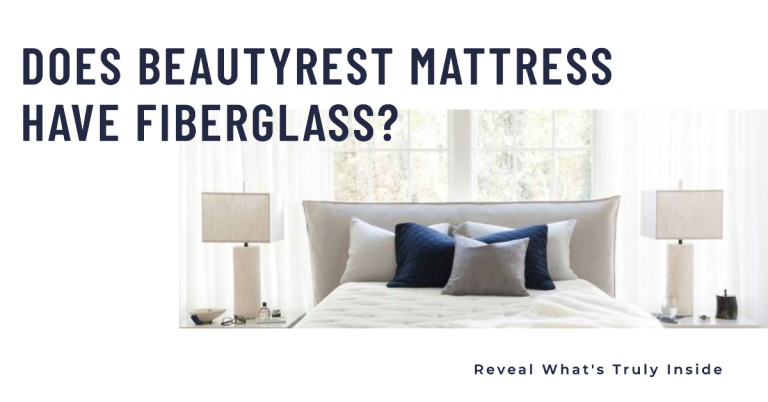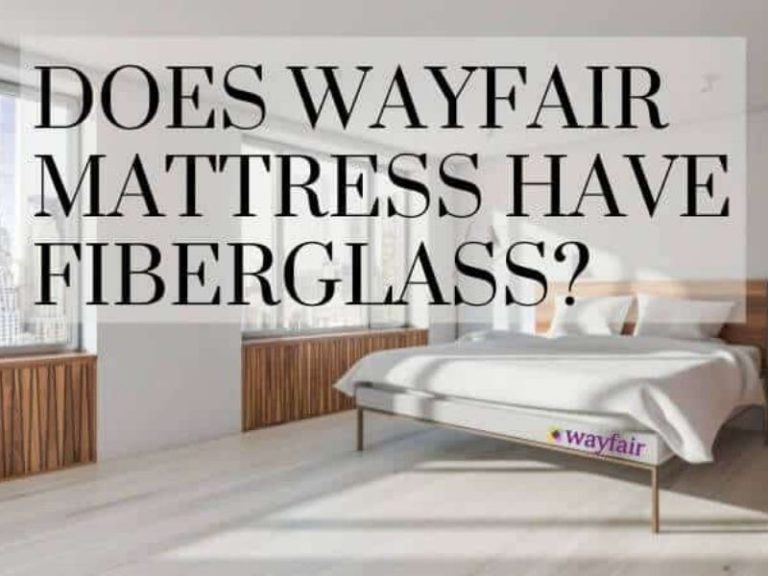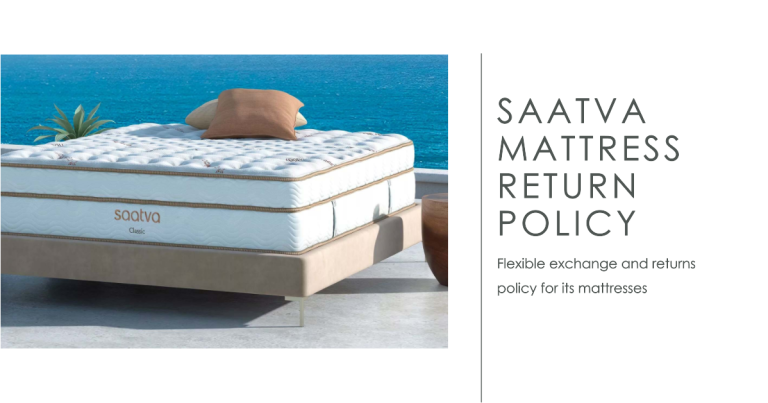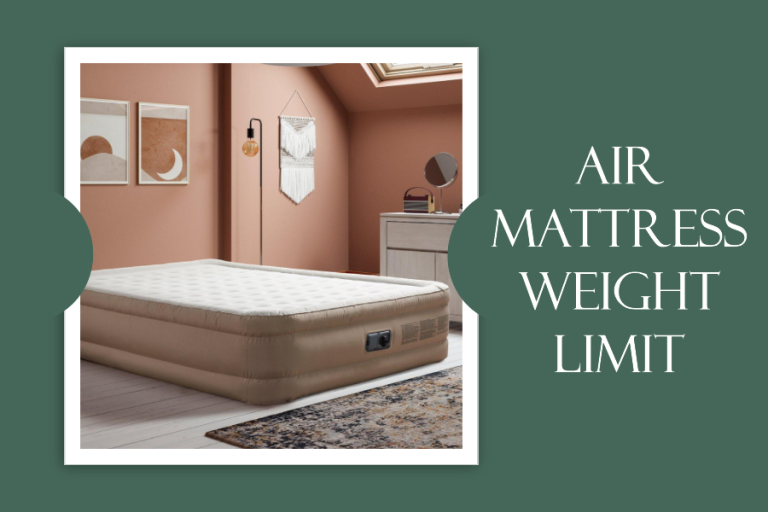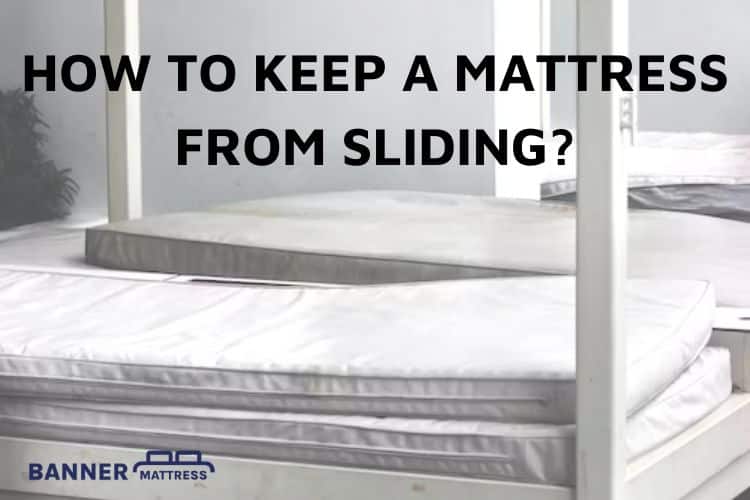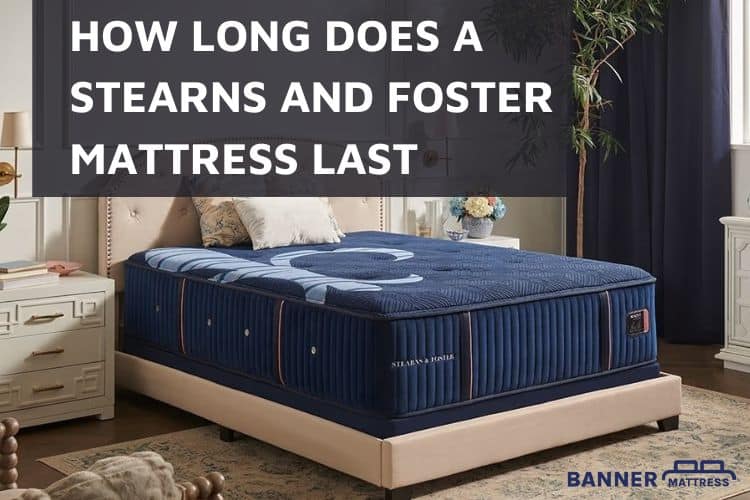As people become more aware of the potential dangers associated with certain types of mattresses, fiberglass has become a topic of concern. What exactly is fiberglass, and what are the advantages and disadvantages of using it in mattresses?
If you’re in the market for a new bed, it’s important to understand these facts to ensure you’re investing in a safe and healthy product for you and your family. Without this knowledge, you run the risk of spreading harmful glass particles throughout your home.
In this article, we’ll provide information on fiberglass and fiberglass mattresses, and offer a list of well-known manufacturers that do and do not use fiberglass in their products. Armed with this knowledge, you’ll be able to make an informed decision when it comes to purchasing your next mattress.
About Fiberglass
Get ready to learn about a fascinating material – fiberglass! We’ll cover everything from what it is and how it’s made, to its history and popularity, different types use in daily life, and even future trends.
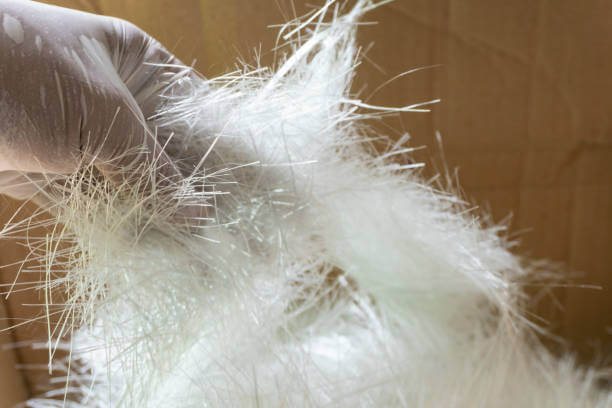
What is fiberglass?
Fiberglass, often known as glass fiber, is a reinforcing plastic fiber. When mixed with resin, fiberglass creates a composite material with excellent durability and longevity.
Features
Fiberglass outperforms other materials due to its low weight, durability, and flexibility. One of the most significant advantages of glass fiber is its ability to be molded into complex shapes with ease. The color of the fibers may range from light yellow to pure white. Due to its small size, fiberglass is often hard to see.
History and popularity
Glass fibers have been used in small amounts since ancient times by the Egyptians and Phoenicians. However, modern fiberglass was not developed until 1932 due to an accidental discovery by scientist Dale Kleist [1].
While trying to create a vacuum-tight barrier between two glass blocks, a jet of high-pressure air transformed molten glass into tiny fibers. Kleist had stumbled upon a process for mass-producing fiberglass, which he later perfected. The term “Fiberglass” was trademarked in 1938.
Since then, fiberglass has been used to manufacture a wide range of products, including clothing, boat hulls, fishing rods, and automotive bodywork, thanks to a 1953 collaboration between Fiberglass and Chevrolet.
Types of fiberglass
The following are the most common types of glass fiber based on the proportions of raw materials used in production:
- A-glass: Also known as alkali glass, this type of glass fiber can withstand harsh conditions and is structurally similar to ordinary window glass.
- C-glass: Known as chemical glass, C-glass fiber has excellent resistance to chemical impact.
- E-glass: Referred to as electrical glass, E-glass fiber is an excellent electrical insulator.
- AE-glass: This type of glass fiber can withstand alkaline conditions.
- S-glass: Also known as structural glass, S-glass fiber is prized for its robust mechanical qualities.
A wide range of applications
The use of fiberglass is incredibly versatile due to its lightweight, durable, and weather-resistant properties, as well as its ability to take on various surface textures.
It is utilized in a wide range of applications, including airplanes, boats, cars, bathtubs and enclosures, swimming pools, hot tubs, septic tanks, water tanks, roofs, pipelines, cladding, casts, surfboards, and exterior door skins.
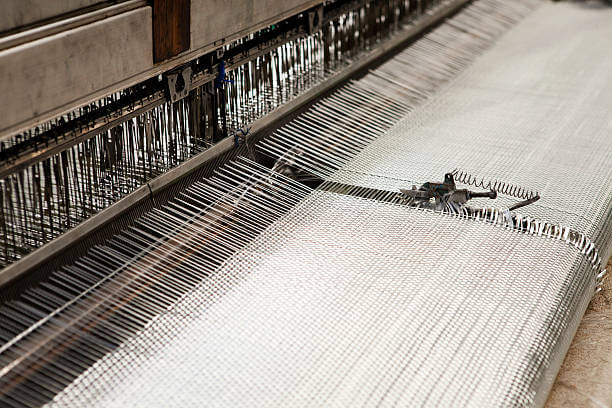
Fiberglass comes in various forms for a variety of uses, with the most common ones being:
- Fiberglass tape: With its glass fiber yarns, this type of material has excellent thermal insulation properties. It is commonly used for wrapping vessels, hot pipelines, and similar applications.
- Fiberglass cloth: This smooth cloth is available in several variants, including glass fiber yarns or glass filament yarns. It is often used for heat shields, fire curtains, and other applications.
- Fiberglass rope: Made from braided glass fiber yarns, this type of rope is often used as packing material.
Future trends
The fiberglass industry is projected to witness significant growth in the future. The market is expected to reach $22.48 billion by 2029, up from $16.72 billion in 2022, according to Fortune Business Insights.
The demand for glass fiber is expected to rise in producing lightweight and strong components for vehicles and aircraft. Additionally, the building and construction industry is likely to contribute to the growth of the market due to the increasing use of glass fiber in insulation and composite applications.
Do mattresses have fiberglass?
Some mattresses contain fiberglass for its flame-retardant properties, which is a cheaper option for manufacturers. Let’s explore how this practice is being implemented and if it affects our living standards.
Is the fiberglass in mattresses safe?
Fiberglass is a type of glass that can be spun into tiny fibers and used in a variety of products, including insulation, filters, and flame-resistant materials.
While it’s an effective fireproofing material, it can pose risks to human health if it’s released into the air or comes into contact with the skin. Specifically, fiberglass exposure can lead to respiratory problems and other health issues [2].
Affect users’ health
- Respiratory problems
Fiberglass is a form of glass that can be spun into tiny fibers and used in a wide range of goods. These products include insulation, filters, and materials resistant to flames.
Fireproofing using glass fiber is effective, although the material poses risks if discharged into the air or touches the skin.

Inhaling fiberglass fibers can cause respiratory irritation and symptoms such as wheezing, coughing, and breathing difficulties.
Prolonged exposure to glass fibers may also increase the risk of lung diseases and cancer, particularly in occupational settings where workers are exposed to high levels of the material.
- Skin irritation and rashes
When fiberglass comes into contact with the skin, it may cause irritation and even rashes, in addition to the respiratory issues it might cause. Glass wool’s microfibers are small enough to penetrate the skin and provoke a painful rash. Exposure to fiberglass may aggravate pre-existing skin diseases, including eczema and contact dermatitis.
- Release harmful substances when burned
The potential release of toxic compounds during combustion is another significant issue with fiberglass-filled mattresses. Mattresses containing glass fiber can produce harmful gases when burned, which can cause respiratory problems and even cancer. Inhaling these vapors can lead to various health issues, including difficulty breathing, headaches, and eye discomfort.
Cause contamination
- House contamination
One significant issue with fiberglass in mattresses is that if the mattress is damaged, the microscopic glass fibers can become airborne and spread contamination throughout the house.
This can pose a risk to children and animals, and the contamination may become unbearable for some individuals, leading them to leave their homes.
- Clothing contamination
Sleeping on a mattress contaminated with glass fiber can leave shards of the substance on your sheets, pillowcases, and clothing in the morning.
Washing contaminated clothes and linens in a washing machine can spread the contaminants to the machine’s drum and filters, leading to further contamination.
Continued washing of contaminated items can result in the washing machine becoming contaminated with fiberglass, and all of your clothing may become contaminated as a result.
Why is there fiberglass in mattresses?
The government law requirement
Since 2007, mattresses have been required to adhere to a fire safety standard established by the Consumer Product Safety Commission [3]. According to the Federal Safety Standard for the Flammability (Open Flame) of Mattress Sets, mattresses must be open flame resistant.
The CPSC requires manufacturers to confirm that their mattresses pass a flammability test before they are released to the market. It’s worth noting that fiberglass isn’t the only fire retardant recognized by the CPSC, although it is often used as a protective layer because it is an insulator and thermal barrier.
If a mattress catches fire, the fiberglass will melt instead of allowing the fire to spread, preventing the fire from spreading as quickly and giving occupants more time to escape.
The economic benefits of using fiberglass
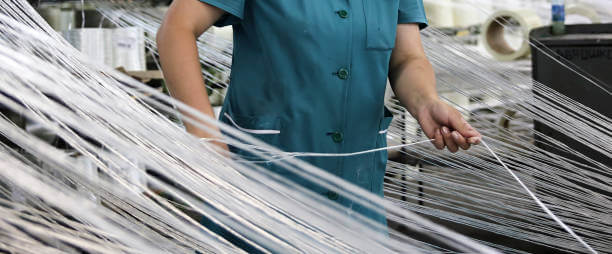
In addition to being a fire barrier, fiberglass is also commonly used in mattresses because of its low cost. It is one of the cheapest solutions to meet industrial fire regulations, and it provides peace of mind while sleeping in a soft, warm bed. This is especially true for memory foam mattresses, which are highly flammable.
Are there any safer alternatives to fiberglass?
To be legally sold in the United States, mattresses must pass the Federal Mattress Standard Flammability Test. Although fiberglass is a very inexpensive option, there are other solutions available.
Wool
Using wool instead of glass fiber is a simple and effective way to make a mattress. Wool has inherent fire resistance and other benefits, such as being hypoallergenic, sustainable, and environmentally friendly.
Additionally, it does an excellent job of regulating temperature, keeping you cool while you sleep, making it a top choice for those who tend to become hot in bed.
Hemp
Hemp is another sustainable option for making mattresses without using harmful fiberglass. It has similar hypoallergenic and biodegradable properties as wool.
Hemp is a versatile plant that is easy to grow and harvest, making it an excellent option for environmentally conscious consumers.
Other alternatives
There are also other alternatives to fiberglass, such as Kevlar, which is commonly used in bulletproof vests due to its high strength and heat resistance. However, these alternatives may be more expensive and less widely available than wool or hemp.
How to tell if your mattress has fiberglass?
Fiberglass is attached inside the mattress and sometimes it’s a little difficult to figure out whether your mattress has fiberglass or not, but we will cover some tips for you to get this straight.
How does fiberglass look on mattresses?
Unless you remove the cover of your mattress, you won’t be able to see the layer of fiberglass that was woven into it. The bright white, almost translucent material might be mistaken for plastic threads.
However, due to the nature of glass fiber, small fragments may break away from the woven surface. These fragments are difficult to see and may leak out of the mattress or poke through the cover. Tiny particles floating in the air can be inhaled or sucked into heating and cooling systems.
Tips on identifying fiberglass in your mattress
There are a few methods that can help you determine whether your mattress contains fiberglass.
Check the label
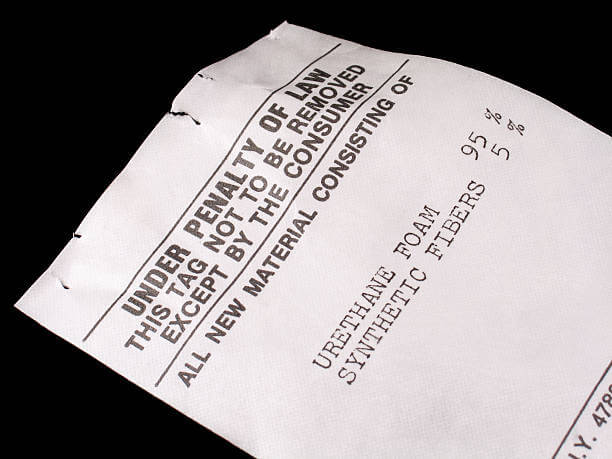
Almost all mattresses have a list of their materials on the label, so the first step is to search for terms like “glass,” “fiberglass,” and “fiberglass-related.”
If you come across new terms, you can use Google to see whether this material or substance relates to fiberglass.
If you answered “yes,” your mattress likely contains fiberglass.
Check online
Currently, this is the optimal method for determining whether or not your mattress contains fiberglass. For example, if you want to buy a Lull mattress, you can search for the question “Does Lull mattress contain fiberglass?” on the Internet.
There’s a strong likelihood you’ll get the info you need. The issue with this method is that it can lead to contradictory information, making it difficult to determine whether a particular mattress contains fiberglass.
However, if you cannot find relevant articles or material online, you may always use other methods.
Check for warnings
Mattresses with warnings like “do not remove the cover” or “do not wash the mattress cover” are likely to contain fiberglass. When a mattress’s manufacturer advises against opening the cover or washing it without an apparent reason, you can be sure it contains fiberglass.
How to know if the mattress has fiberglass at first?
To spot them in the first place, let’s examine some less obvious warning signs.
Price
Protective fiberglass is inexpensive. Therefore, it is more likely to be used by low-end mattress producers than those producing luxury models. Mattresses with a popular outer material (such as memory foam) but a price tag of less than $600 for a queen size are likely to have a glass-fiber inner layer.
Origin
Mattresses produced in countries like China may not meet the same quality requirements as those produced in the United States. Of course, not all Chinese manufacturers utilize glass fiber in their products, but it’s more probable that an inner mattress cover created elsewhere than in the United States would have some fiberglass.
Material
Memory foam mattresses, especially inexpensive ones, have a higher likelihood of containing a fiberglass cover. Due to the high combustibility of this material, producers may turn to less expensive fire retardant methods to comply with US safety standards.
How do you remove fiberglass from your mattress?
Prolonged exposure to fiberglass dust can have severe health effects, but it is commonly used in mattresses as a chemical fire retardant. Is the cost savings from using a mattress with fiberglass insulation worth the potential health issues? There is no certain way to deal with fiberglass in your mattress completely unless you discard the whole piece of your bedding item.
Though, we know that there are some steps that you can take to alleviate the effect of fiberglass on your mattress. There are several ways to remove fiberglass from a mattress, including:
- Use an environmentally friendly cleaner on hard surfaces such as floors, walls, countertops, and ceilings to reduce the harmful effects of glass fiber on the environment.
- Clean the room using a vacuum cleaner on all surfaces, including curtains, blinds, mattresses, and carpets. Repeat this process as often as possible for optimal results.
- Use a mattress protector designed specifically to protect against glass fibers to avoid contact with airborne fibers as you move about on the bed.
- Maintain a clean environment in your bedroom by using an air purifier.
- Don’t lie directly on the bed; use a bedding pad or topper.
However, even with these safeguards, contact with fiberglass remains unavoidable with long-term use.
Mattresses without fiberglass
If you have significant sensitivities or allergies to the chemicals, it is recommended to replace your mattress with one that does not contain fiberglass.
The use of fiberglass in mattress fireproofing is widespread, but there are other options available. Mattress companies are increasingly opting for more natural fire retardants in their products, which makes for a safer and healthier night’s sleep.
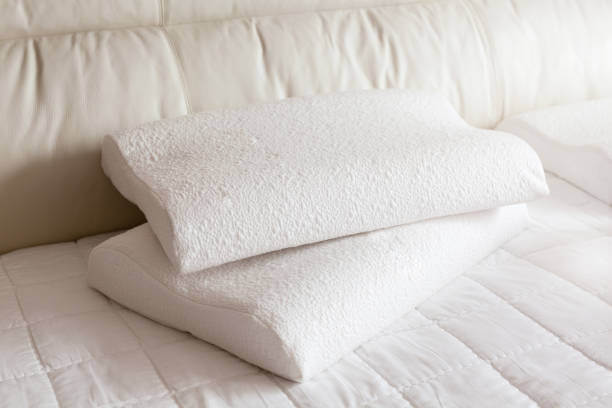
There are several alternatives to mattresses containing fiberglass that you can choose from. Many mattress manufacturers now decide not to use it, and those that do are widely available. Here, we will look at different mattress manufacturers and the models they provide that do not include the usage of fiberglass in their manufacturing process.
- Amerisleep AS3: Conforms to almost any position thanks to its plant-based memory foam.
- Zoma Hybrid: A mattress made from gel memory foam that has a responsive surface.
- Vaya Hybrid: A pillow-top hybrid mattress at an affordable price.
- Zoma Boost: A luxury pillowtop hybrid that provides cooling and compressive support.
- Saatva Classic: This bed is a durable innerspring bed containing two types of coils with a plush pillow top for added comfort.
- Zoma Start: A cool mattress for hot sleepers that’s compact and affordable.
- Amerisleep Organica: The Dunlop/Talalay latex hybrid mattress provides excellent comfort.
- Joybed LXP: Designed for allergy sufferers sensitive to latex, this mattress is fiber-free and latex-free.
- PlushBeds Botanical Bliss: Offers a variety of firmnesses and thicknesses of latex mattresses.
- Happy Mattress: A 100% organic mattress made with wool and cotton that has been GOTS certified.
Choosing the best mattress without fiberglass is a great way to protect your health from the harmful effects of fiberglass dust. It’s essential to research and learns about the different types of mattresses available to make an informed decision that will benefit your overall well-being. Find out more about these brands in a post where we share all of our experiences with these mattresses. Rest assured you can enjoy your comfort and safety on these beds.
Some mattress brands with fiberglass
Since 2007, all mattresses must meet federal safety standards for open-flame fire resistance. Fiberglass is the cheapest material used for this purpose, and businesses do not want to skip it. However, since the discovery of its harmful effects, using fiberglass in mattresses has become a major concern.
Despite its cost-effective benefits, it may eventually be banned completely. Knowing which mattress brands use fiberglass can help you research more thoroughly and make more careful decisions.
The following brands use fiberglass in some or all of their products, but they also offer specific advantages for customers:
- Zinus: Zinus is an affordable mattress brand that offers a range of firmness options and certified materials.
- Helix: Helix Sleep offers an extensive selection of mattresses that cater to a variety of sleeping styles, and their mattress matchmaker sleep quiz helps customers find the perfect fit.
- Lull: Lull provides high-quality and affordable mattresses with luxurious hybrid construction and optimal support.
- Milliard: Milliard mattresses are a perfect solution for small spaces and offer portability and convenience, but some models have fiberglass reinforcement.
- Olee: Olee is an affordable mattress brand that offers great initial comfort but has issues with durability and overheating, and some models have fiberglass.
- Allswell: Allswell is an affordable sleep company that offers three mattresses with a hybrid construction and features fiberglass layers.
- Lucid: Lucid offers affordable mattresses with varying styles and thicknesses and multiple combinations of foam layers.
- Vibe: This brand produces affordable and convenient mattresses with gel-infused foam for cool comfort.
- Molblly: Molblly offers superior cushioning and cool comfort with three layers of foam and no harsh chemicals.
If you want to gain more insights into the pros and cons of each brand and its products, you can learn more in this post on our website.
Conclusion
In conclusion, given the potential health hazards associated with fiberglass mattresses, it is crucial to be well-informed about the relevant facts. Fiberglass particles can be difficult to clean up and may pose a continuous risk to your health.
Therefore, it is advisable to invest in a higher-quality mattress that requires less maintenance, even if it is more expensive. Ultimately, the choice of mattress is a personal one, and we wish you a restful night’s sleep.
FAQs
Given its adaptability, cheap cost, and extreme durability, fiberglass finds use in many different fields and an extensive range of items.
If your mattress ever catches fire, the fiberglass insulation and thermal barrier will melt rather than allow the fire to spread. It also prevents the fire from spreading as quickly, giving your mattress more time to cool down before the flames may reach the flammable items within.
While it’s true that most mattresses contain glass fiber, not all inexpensive mattresses (especially bed-in-a-box models) include this material. Beds stuffed with natural, organic, or eco-friendly materials are less likely to contain fiberglass.
Most mattress-in-a-box providers feature a lengthy “try it out” period. During this time, customers may return their mattresses for no cost and with little hassle. You may obtain a full refund if you decide the bed isn’t for you.
When shopping for a mattress made of fiberglass, look for one with the material embedded deep inside the bed. That will help if any of this potentially dangerous material escapes from your mattress. Therefore, the harmful health and environmental repercussions of the mattress’s fiberglass filling are eliminated.
You should eliminate any obvious fiberglass and treat the symptoms. If your symptoms continue, you should see a doctor.
If that is the case, you must not use this mattress. Rather than reusing it, you should get a new one that does not include glass fiber.
The mattress must have a fireproof barrier. Many memory foam mattresses are made using fiberglass because it is inexpensive and effective. However, does glass fiber appear in all memory foam mattresses? Thankfully, the response is no.
Non-fiberglass memory foam mattresses often employ silica, occasionally combined with wool, as a fire barrier.
References
- Nick Gromicko, CMI® and Kenton Shepard. Fiberglass Insulation: History, Hazards and Alternatives. Retrieved from
https://www.nachi.org/fiberglass-insulation-history-hazards-alternatives.htm - Slumber Yard Team. Fiberglass in Mattress: Is it Safe? Retrieved from
https://myslumberyard.com/blog/is-there-fiberglass-in-mattress/ - Consumer Product Safety Commission. About Us. Retrieved from
https://www.cpsc.gov/About-CPSC


